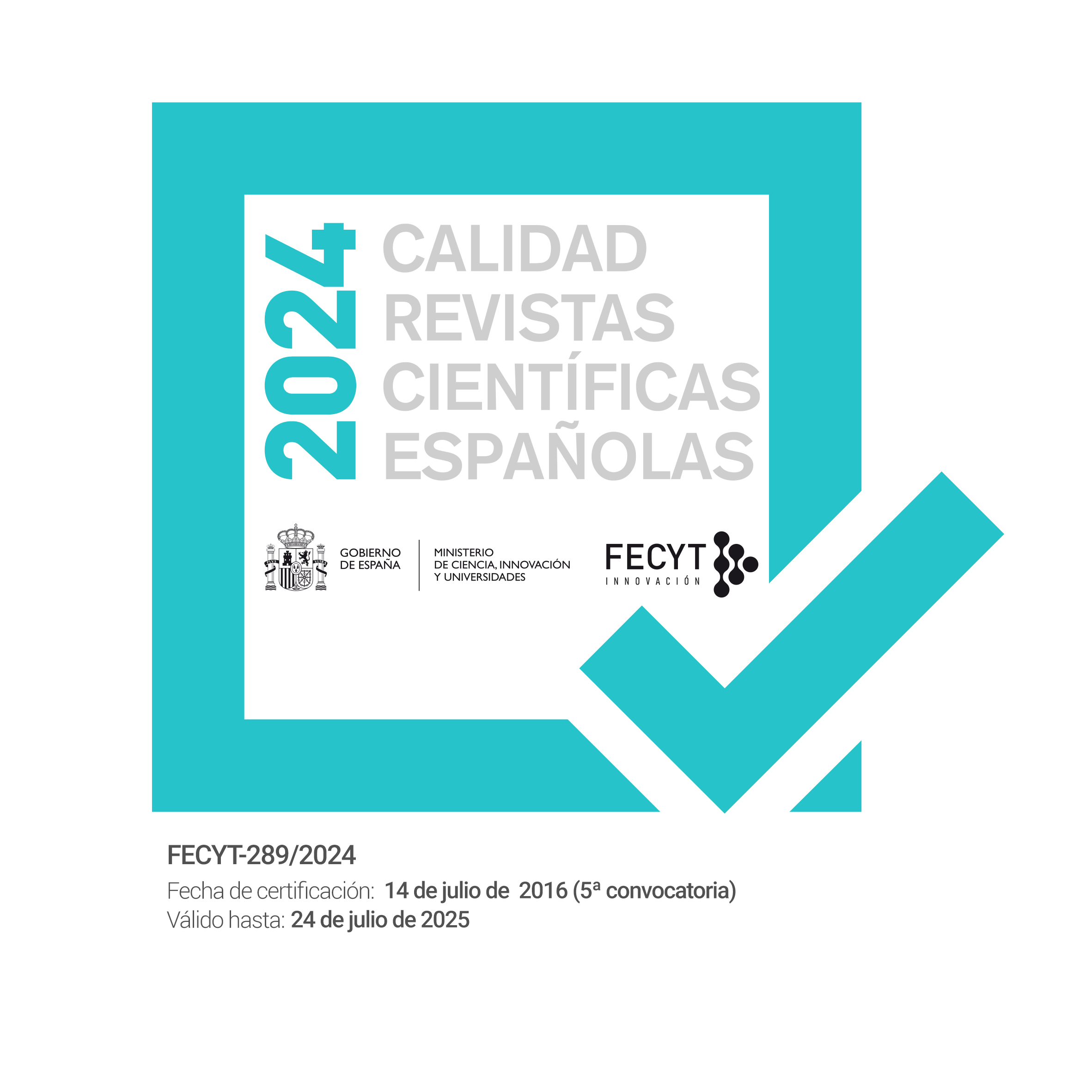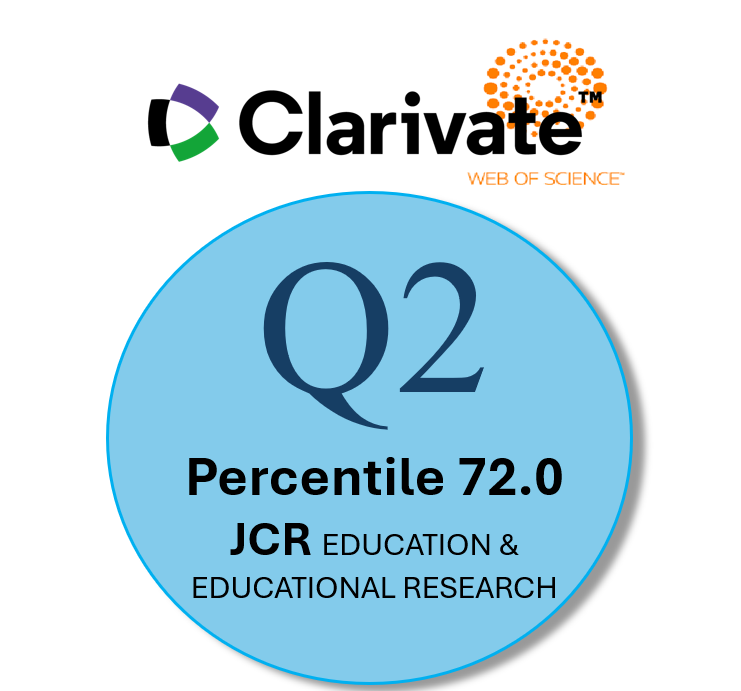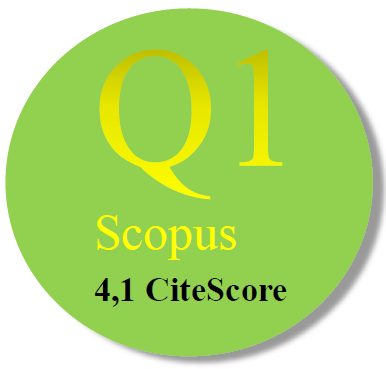Use of the Virtual Learning Environment among Higher Education Teaching Staff: A Gender Analysis
Abstract
The widespread use of technology in daily life, and particularly in education, increasingly influences both the self-perception of Information and Communication Technology skills and teachers’ digital competence. This study aims to analyze if there are gender differences in the pedagogical use of the Moodle platform, by conducting surveys among a population of 640 teachers from a technical professional higher education institution in Chile. The study of gender differences has been conducted through a statistical analysis based on a significance test of null hypothesis and the gender variable has been analyzed in a decontextualized manner, without taking into account the interactions that they could have with other variables. Among the primary results, evidence shows that there are no significant differences between female and male teachers with regard to the educational use of the Moodle platform as well as self-qualification with respect to proficiency on the platform
Downloads
-
Abstract5729
-
PDF (Español (España))3458
References
Ahmad, T. B. T., Basha, K. M., Marzuki, A. M., Hisham, N. A. & Sahari, M. (2010). Faculty’s acceptance of computer based technology: Cross-validation of an extended model. Australasian Journal of Educational Technology, 26(2), 268-279. http://www.ascilite.org.au/ajet/ajet26/ahmad.html.
Alaminos, A. (2006). El muestreo en la investigación social. En A. Alaminos y J.L. Castejón, Elaboración, análisis e interpretación de encuestas, cuestionarios y escalas de opinión (46-67). Alcoy: Marfil.
Almerich Cerveró, G., Suárez Rodríguez, J. M., Jornet Meliá, J. M., & Orellana Alonso, M. N. (2011). Las competencias y el uso de las Tecnologías de Información y Comunicación (TIC) por el profesorado: estructura dimensional. Revista electrónica de investigación educativa, 13(1), 28-42.
Aristovnik, A., Tomazevic, N., Kerzic, D., & Umek, L. (2017). The impact of demographic factors on selected aspects of e-learning in higher education. The International Journal of Information and Learning Technology, 34(2), 114-12
Asiri, M. J. S. (2012). Factors influencing the use of learning management system in Saudi Arabian Higher Education: A theoretical framework. Higher Education Studies, 2(2), 125-137.
Bandura, A. (1977). Self-efficacy: Toward a Unifying Theory of Behavioural Change. Psychological Review, 84 (2), pp. 191-215. http://dx.doi.org/10.1037/0033-295X.84.2.191
Bandura, A., Barbaranelli, C., Caprara, G. y Pastorelli, C. (2001). Self-efficacy Beliefs as Shapers of Children’s Aspirations and Career Trajectories. Child Development, 72 (1), pp. 187-206. http://dx.doi.org/10.1111/1467-8624.00273
Bidarian, S., Davoudi, A.M. (2011) A Model for application of ICT in the process of teaching and learning. International Conference on Education and Educational Psychology (ICEEPSY). Procedia - Social and Behavioral Sciences 29 (2011) 1032-1041.
Bishop, Y.M., Fienberg, S.E. y Holland, P.W. (2007). Discrete Multivariate Analysis. Theory and Applications. New York: Springer.
Buabeng-Andoh, C. (2012). Factors influencing teachers' adoption and integration of information and communication technology into teaching: A review of the literature. International Journal of Education and Development using Information and Communication Technology, 8(1), 136.
Cabero J. y Barroso, J. (2016). ICT teacher training: a view of the TPACK model. Cultura y Educación, 28(3), 633-663. http://dx.doi.org/10.1080/11356405.2016.1203526.
Cabero, J., Sampedro, B y Gallego, O. (2016). Valoraciones de la “aceptación de la tecnología de formación virtual” por profesores universitarios asistentes a un curso de formación virtual. EDUTEC, Revista Electrónica de Tecnología Educativa, 56, 31-47. Recuperado el 27/02/2018 de http://www.edutec.es/revista.
Cantón, I., Cañón, R y Grande, M. (2017). La comunicación como subdimensión de la competencia digital en futuros maestros de primaria. Pixel-Bit. Revista de Medios y Educación, 50, 33-47. doi: http://dx.doi.org/10.12795/pixelbit.2017.i50.02.
Casquero, G. B., García, L. M. C., & González, R. F. L. (2014). Competencias Tecnológicas de los profesores de Infantil y Primaria de Extremadura en función del género. IE Comunicaciones: Revista Iberoamericana de Informática Educativa, (19), 3.
Castellanos, A., Sánchez, C. y Calderero, J. (2017). Nuevos modelos tecnopedagógicos. Competencia digital de los alumnos universitarios. Revista Electrónica de Investigación Educativa, 19(1), 1-9, (Recuperado de http://redie.uabc.mx/redie/article/view/1148
Chen, R. (2010). Investigating models for preservice teachers’ use of technology to support student-centered learning. Computers & Education, 55(1), 32-42. http://dx.doi.org/10.1016/j.compedu.2009.11.015.
Chiu, J. L., & Linn, M. C. (2012). The role of self-monitoring in learning chemistry with dynamic visualizations. In Zohar, A., Dori, Y. J. (Eds), Metacognition in science education: Trends in current research. 133-163. Dordrecht: Springer.
Chou, C., Wu, H. C., & Chen, C. H. (2011). Re-visiting college students’ attitudes toward the Internet-based on a 6-T model: Gender and grade level difference. Computers & Education, 56(4), 939-947
Clark, R. C. and Meyer, R. E. (2011), E-learning and the science of instruction: proven guidelines for consumers and designers of multimedia learning, Pfeiffer, New York.
Dusick, D. M. (1998). What social cognitive factors influence faculty members’ use of computers for teaching? A literature review. Journal of Research on Computing in Education, 31 (2), 123-137.
Egbo O. P., Chinwe R., Ikechukwu C., & Onwumere J. U. (2011). Gender perception and attitude towards ELearning: A case of Business students, University of Nigeria. International Journal of Computer Application, 1, 135–148.
González-Gómez, F., Guardiola, J., Rodríguez, Ó. M., & Alonso, M. Á. M. (2012). Gender differences in e-learning satisfaction. Computers & Education, 58(1), 283-290.
Grundy, F. (1996) Women and computers. Exeter, England: Intellect Books
Güdüz, A. e İşman, A. (2018). Pre-Service Teachers’ Perception of Distance Education. TOJET: The Turkish Online Journal of Educational Technology, 17(1), 125-129.
Jelfs, A. y Richardson, J. (2013). The use of digital technologies across the adult life span in distance education. British Journal of Educational Technology, 44, 2, 338-351. doi:10.1111/j.1467-8535.2012.01308.x./s11423-014-9355-4.
Kafyulilo, A., Fisser, P., & Voogt, J. (2016). Factors affecting teachers’ continuation of technology use in teaching. Education and Information Technologies, 21(6), 1535-1554. doi:10.1007/s10639-015-9398-0
Kim, Y. L. (2010). Gender role and the use of university library website resources: a social cognitive theory perspective. Journal of Information Science, 36(5), 603–617.
Kirkup, G., & Kirkwood, A. (2005). Information and communications technologies (ICT) in higher education teaching—a tale of gradualism rather than revolution. Learning, Media and Technology, 30(2), 185-199.
Koch, S., Muller, S. & Sieverding, M. (2008). Women and computers. Effects of stereotype threat on attribution of failure. Computers & Education, 51(4), 1795-1803. http://dx.doi.org/10.1016/j.compedu.2008.05.007
Krause, M., Pietzner, V., Dori, Y. J., & Eilks, I. (2017). Differences and Developments in Attitudes and Self-Efficacy of Prospective Chemistry Teachers Concerning the Use of ICT in Education. Eurasia Journal of Mathematics, Science and Technology Education, 13(8), 4405-4417.
Lai, K. y Hong, K. (2015). Technology use and learning characteristics of students in higher education: Do generational differences exist? British Journal of Educational Technology, 46(4), 725-738. doi:10.1111/bjet.12161.
Law, N., Pelgrum, W. J., & Plomp, T. (Eds.). (2008). Pedagogy and ICT use in schools around the world: Findings from the IEA SITES 2006 study (Vol. 23). Springer Science & Business Media
Lohbeck, A., Hagenauer, G., & Frenzel, A. C. (2018). Teachers' self-concepts and emotions: Conceptualization and relations. Teaching and Teacher Education, 70, 111-120.
Mahmud, R., & Ismail, M. A. H. (2010). Impact of Training and Experience in Using ICT on in-Service Teachers' Basic ICT Literacy. Malaysian Journal of Educational Technology, 10 (2), 6.
Moran, M., Hawkes, M., & El Gayar, O. (2010). Tablet personal computer integration in higher education: Applying the unified theory of acceptance and use technology model to understand supporting factors. Journal of Educational Computing Research, 42(1), 79-101. http://dx.doi.org/10.2190/EC.42.1.d
O´Dwyer, L. y Bernauer, J. (2014). Quantitative research for the qualitative researcher. California: Sage.
OCDE (2010). PISA 2009 at a glance. OECD Publishing http://dx.doi.org/10.1787/9789264095298-en.
Ong, C. S. & Lai, J. Y. (2006). Gender differences in perceptions and relationships among dominants of e-learning acceptance. Computers in Human Behavior, 22(5), 816-829. http://dx.doi.org/10.1016/j.chb.2004.03.006
Pohl, M. (1997). The Internet: a feminine technology? In R. Lander, & A. Adam (Eds.), Women in Computing (pp. 190–197). Exeter, England: Intellect Books.
Raman A., Rozalina Khalid Y., & Rizuan M. (2014). Usage of learning management system (Moodle) among postgraduate students: UTAUT model. Asian Social Science, 10, 186–195 http://dx.doi.org/10.5539/ass.v10n14p186.
Radovan, M. y Kristl, N. (2017). Acceptance of Technology and its Impact on Teacher’s Activities in Virtual Classroom: Integrating UTAUT and CoI into a Combined Model. TOJET: The Turkish Online Journal of Educational Technology, 16(3), 11-22.
Ríos, J.M., Gómez, E. y Priscilla, M. (2018). Valoración de competencias TIC del profesorado universitario: un caso en Chile. Pixel-Bit. Revista de Medios y Educación, 52, 55-65. doi: http://dx.doi.org/10.12795/pixelbit.2018.i52.04.
Rodríguez Espinosa, H., Restrepo Betancur, L. F., & Aranzazu Taborda, D. (2016). Desarrollo de habilidades digitales docentes para implementar ambientes virtuales de aprendizaje en la docencia universitaria. Sophia, 12(2), 261-270.
Rodríguez, E., Restrepo, L. y Aranzazu, D. (2014). Alfabetización informática y uso de sistemas de gestión del aprendizaje (LMS) en la Docencia. Revista de Educación Superior, 43, 171, 139-159.
Romero, R., Cabero, J. y Barroso, J. (2016). E- Learning of Andalusian University's Lecturers. Gender. TOJET: The Turkish Online Journal of Educational Technology, 15, 2, 25-37.
Rossi Cordero, A. E., & Barajas Frutos, M. (2015). Elección de estudios CTIM y desequilibrios de género. Enseñanza de las ciencias, 0059-76.
Sabariego, M. (2012). El proceso de investigación (parte 2). En Bisquerra, R. (coord.), Metodología de la investigación educativa (pp. 127-163). (3ª. ed.). Madrid: La Muralla.
Schumacher, P., & Morahan-Martin, J. (2001). Gender, Internet and computer attitudes and experiences. Computers in Human Behavior, 17(1), 95–110.
Sieverding, M. & Koch, S. C. (2009). (Self-)Evaluation of computer competence: How gender matters. Computers & Education, 52(3), 696-701. http://dx.doi.org/10.1016/j.compedu.2008.11.016
Sosa, E., Salinas, J., & De Benito, B. (2018). Factors that facilitate or limit the incorporation of emerging technologies in the classroom. International Online Journal of Education and Teaching (IOJET), 5(1), 38-59.
Suárez, J., Almerich, G. Gargallo, B. y Aliaga, F. (2013). Las competencias del profesorado en TIC: estructura básica. Educación XX1, 16, 1, 39-62. DOI: 10.5944/educxx1.16.1.716.
Suri G., & Sharma S. (2013). The impact of gender on attitude towards computer technology and E-learning: An exploratory study of Punjab University, India. International Journal of Engineering Research, 2, 132–136.
Sussman, N., & Tyson, D. (2000). Sex and power: gender differences in computer mediated interactions. Computers in Human Behavior, 16(4), 381–394.
Teo, T. (2010). Measuring the effect of gender on computer attitudes among pre-service teachers: A multiple indicators, multiple causes (MIMIC) modeling. Campus-Wide Information Systems, 27(4), 227-239. http://dx.doi.org/10.1108/10650741011073770
Teo, T. (2011). Factors influencing teachers’ intention to use technology: Model development and test. Computers & Education, 57(4), 2432-2440.
Terzis, V. & Economides, A. A. (2011). The acceptance and use of computer based assessment. Computers & Education, 56(4), 1032-1044. http://dx.doi.org/10.1016/j.compedu.2010.11.017
Tsai, P.S., & Tsai, C. C. (2010). Elementary school students’ attitudes and self-efficacy of using PDAs in a ubiquitous learning context. Australasian Journal of Educational Technology, 26 (3), 297-308
Tüfekçi Z. (2008). Gender, social capital and social network(ing) sites: Women bonding, men searching. Boston: Annual meeting of the American Sociological Association. Sheraton Boston and the Boston Marriott Copley Place.
Turkle, S. (1995). Life on the screen: identity in the age of the Internet. New York: Simon & Schuster.
United Nations (2014). Measuring ICT and gender: An assessment .New York and Geneva: United Nations Retrievedfrom http://unctad.org/en/PublicationsLibrary/webdtlstict2014d1_en.pdf.
Vázquez-Cano, E., Meneses, E. L., & García-Garzón, E. (2017). Differences in basic digital competences between male and female university students of Social Sciences in Spain. International Journal of Educational Technology in Higher Education, 14(1), 27
Vekiri, I., & Chronaki, A. (2008). Gender issues in technology use: Perceived social support, computer self-efficacy and value beliefs, and computer use beyond school. Computers & Education, 51 , 1392-1404. http://dx.doi.org/10.1016/j.compedu.2008.01.003
Venkatesh, V., & Morris, M. G. (2000). Why don’t men ever stop to ask for directions? Gender social influence and their role in technology acceptance and usage behaviour. MIS Quarterly, 24 (1), 115-139. http://dx.doi.org/10.2307/3250981
Villalba, A., González-Rivera, M. D., & Diaz-Pulido, D. (2017). Obstacles Perceived by Physical Education Teachers to Integrating ICT. TOJET: The Turkish Online Journal of Educational Technology, 16(1), 83-92.
Wang, Sh., Hsu, H., Campbell, T., Coster D. & Longhurst, M. (2014). An investigation of middle school science teachers and students use of technology inside and outside of classrooms: considering whether digital natives are more technology savvy than their teachers. Education Tech Research Dev, 62:637–662. DOI 10.1007
Weiser, E. (2000). Gender differences in Internet use patterns and Internet application preferences: a two sample comparison. CyberPsychology and Behavior, 3(2), 167–178.
Wong, K., Teo, T., & Russo, S. (2012). Influence of gender and computer teaching efficacy on computer acceptance among Malaysian student teachers: An extended technology acceptance model. Australasian Journal of Educational Technology, 28(7), 1190-1207.
Zeldin, A. L. y Pajares, F. (2000). Against the Odds: Self-efficacy Beliefs of Women in Mathematical, Scientific and Technological Careers. American Educational Research Journal, 37(1), p
Las obras que se publican en esta revista están sujetas a los siguientes términos:
1. El Servicio de Publicaciones de la Universidad de Murcia (la editorial) conserva los derechos patrimoniales (copyright) de las obras publicadas, y favorece y permite la reutilización de las mismas bajo la licencia de uso indicada en el punto 2.
2. Las obras se publican en la edición electrónica de la revista bajo una licencia Creative Commons Reconocimiento-NoComercial-SinObraDerivada 3.0 España (texto legal). Se pueden copiar, usar, difundir, transmitir y exponer públicamente, siempre que: i) se cite la autoría y la fuente original de su publicación (revista, editorial y URL de la obra); ii) no se usen para fines comerciales; iii) se mencione la existencia y especificaciones de esta licencia de uso.
3. Condiciones de auto-archivo. Se permite y se anima a los autores a difundir electrónicamente las versiones pre-print (versión antes de ser evaluada) y/o post-print (versión evaluada y aceptada para su publicación) de sus obras antes de su publicación, ya que favorece su circulación y difusión más temprana y con ello un posible aumento en su citación y alcance entre la comunidad académica. Color RoMEO: verde.













